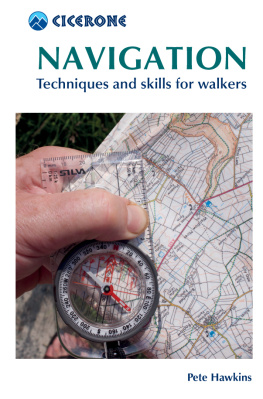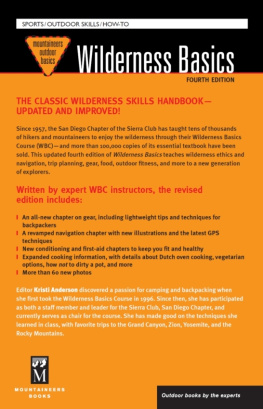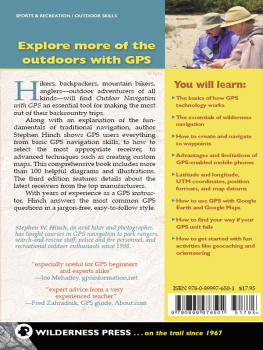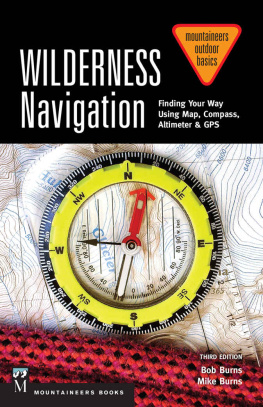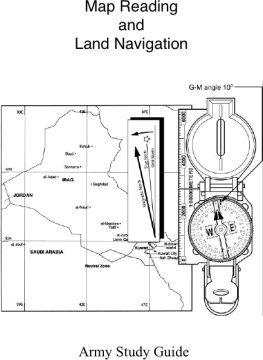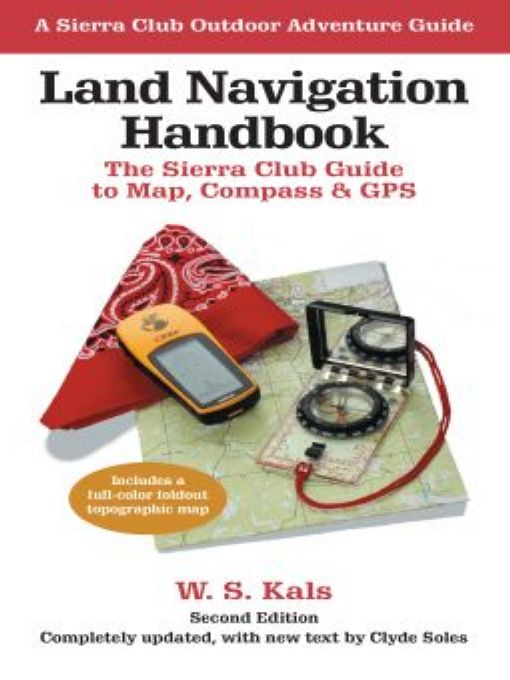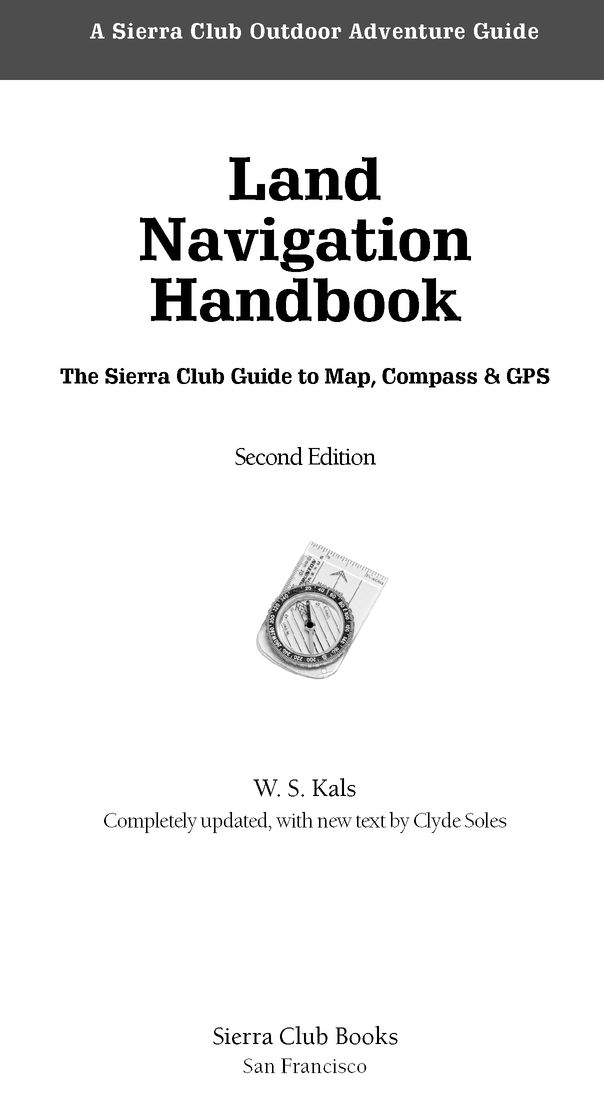Table of Contents
Sierra Club Outdoor Adventure Guides
Simple Foods for the Pack
More than 200 all-natural, trail-tested recipes by Claudia Axcell, Vikki Kinmont Kath, and Diana Cooke
Walking Softly in the Wilderness
The Sierra Club Guide to Backpacking by John Hart
Preface to the Second Edition
It has been a privilege to revise what is certainly a classic instructional text for the outdoors. Land Navigation Handbook has been in print for over twenty years and has educated countless readers on map and compass skills.
Although the basics of navigation havent changed since W. S. Kals first penned this title, the technology sure has. I bought my first personal computer in 1983, the same year the first edition of this book was published. That computer came with 16 kilobytes of RAM, used a cassette tape player for data storage, and could print only crude black textusing that system for navigation was unfathomable.
In that same year, the Global Positioning System (a by-product of the Cold War) was first made available to the public. But using GPS technology required massive receivers that were not exactly portable. It wasnt until about 1993 that the first handheld GPS units became available, and those were big, expensive, and primitive by todays standards.
Now, of course, powerful home computers may have a gigabyte of RAM (over 65,000 times more than my 1983 computer held) and huge hard drives, while photo-quality color printers are commonplace. Some of the current GPS receivers can be worn on your wrist, are cheaper than many cameras, and a few can even display topographic maps on the screen.
With these technological advances, navigation has become much easier. But often the manuals leave users more confused than ever, and they never explain the basic skills still required. Marketing departments may try to convince you that map and compass knowledge are no longer necessarynothing could be further from the truth.
One of the great strengths of Kalss writing is his ability to explain complicated concepts in simple terms. Ive tried to complement, rather than intrude upon, his material while bringing it up to date. This new edition should be useful for many years to come.
Clyde Soles
February 2005
Land Navigation
Some of us learned to navigate the way a foal learns horse business: by trotting alongside mother. At other times we may have learned the kangaroo way, by being carried along. Still later, we likely navigated by watching the heels of the person in front of us.
Many hikers never advance beyond the latter technique. They simply follow other people, guidebook descriptions, and trail signs without ever learning basic navigation skills.
One difficulty in only following markers and trails is that you never know how long itll take you to reach your destination. If you are lucky enough to find a sign at the trailhead giving a time estimate, double it to be on the safe side, at least until you establish a more accurate factor. If the sign gives a distance rather than a time, count on making no more than 1 to 1 miles (1 to 2 kilometers) per hour. If you carry cameras, children, or both, you wont even make that.
But youll get there eventuallyin good summer weather.
Fog may not let you see the next marker or sign. Snow wipes out all signs of a footway surprisingly quickly. Wind-driven snow obliterates blazes, paint, and other markers. If you try to retrace your stepsas you shouldyoull find that the landscape looks completely unfamiliar. Unless, of course, you turned around often on the way in and memorized what the world looks like when you walk the other way.
You should do that even if you do not intend to return by the same trail. Weather, a washed-out foot-bridge, or some minor mishap may force you to execute that popular and highly recommended course change: a 180 turn.
Following marked trails is not advanced navigation, but it beats heel watching.
It wont be long before youll want a mapa map that lets you determine your own routes and how long they should take at your pace. Often, a map alone can tell you where you are, without the need for a compass.
This may make it sound as if a map could solve most problems of navigation. Within some limits, it can.
For instance, you could walk the Appalachian Trail from Springer Mountain, Georgia, to Mount Katahdin, Maine, without a map. But how would you find the post office where your next supply of freeze-dried food and mail is waiting? Without a map, how would you even know where to mail your supplies?
Chapter 2 may tell you more about maps than you wish to know. But this book is not only for people whose hiking strategy is to follow others. It should also serve as a refresher for those who are a bit rusty in land navigation. Even experts will find new information in this book, and those experienced in small-craft navigation will learn to apply what they already know in new ways.
Because sea kayaking is usually performed within sight of land, some basic information on nautical charts and currents is included. Most near shore navigation techniques are related to the landscape.
You will learn how to decode map symbols and to read distance, height, and direction from a map. With practice, you can answer such questions as, How steep is the trail? How long will it take me if Im traveling uphill, or downhill? With new computer mapping software, these questions become even easier to answer.
Once youre familiar with topographic maps and nautical charts, the whole world becomes your play-ground. Youll be able to sight-read maps in Canada, the Andes, the Himalayas, or the Austrian Alps. The differences in details are small and are usually stated on the maps themselves.
The Austrian map, for example, will show symbols used to distinguish between a cable car, a chair lift, a ski tow, and a freight lift that may or may not carry your pack to the hut. The fact that it uses meters and kilometers rather than feet and miles will hardly bother you.
By the time you have reached the subject of reading directions from the mapif not earlieryoull want a compass.
There are certain situations in which you can navigate using a compass without a map. But land navigation, like basic marine navigation, is mainly map-and-compass work. And map and compass are the only tools youll need, although you may find a dime-store ruler useful, and sometimes a pencil stub.
Binoculars, although not counted as navigational tools by most writers, are as helpful in spotting and identifying the next marker as they are in marine navigation. A compact pair of binoculars is smaller than a deck of cards, weighs only 5 ounces, and can enhance any trip.
A compass helps you solve navigational problems such as, If Im heresay on the peak of a mountainwhat mountain is that over there? Or, often more useful, Over there is Mount Onthemap, so where on the Appalachian Trail am I?
Youll read about position lines, a concept that ties together these and other navigational problems. Advanced marine navigators may call them lines of positionLOPs for short.
With an altimeter to measure your elevation, youll learn to fix your position on the map even when bad weather prevents you from seeing past the tips of your skis.


